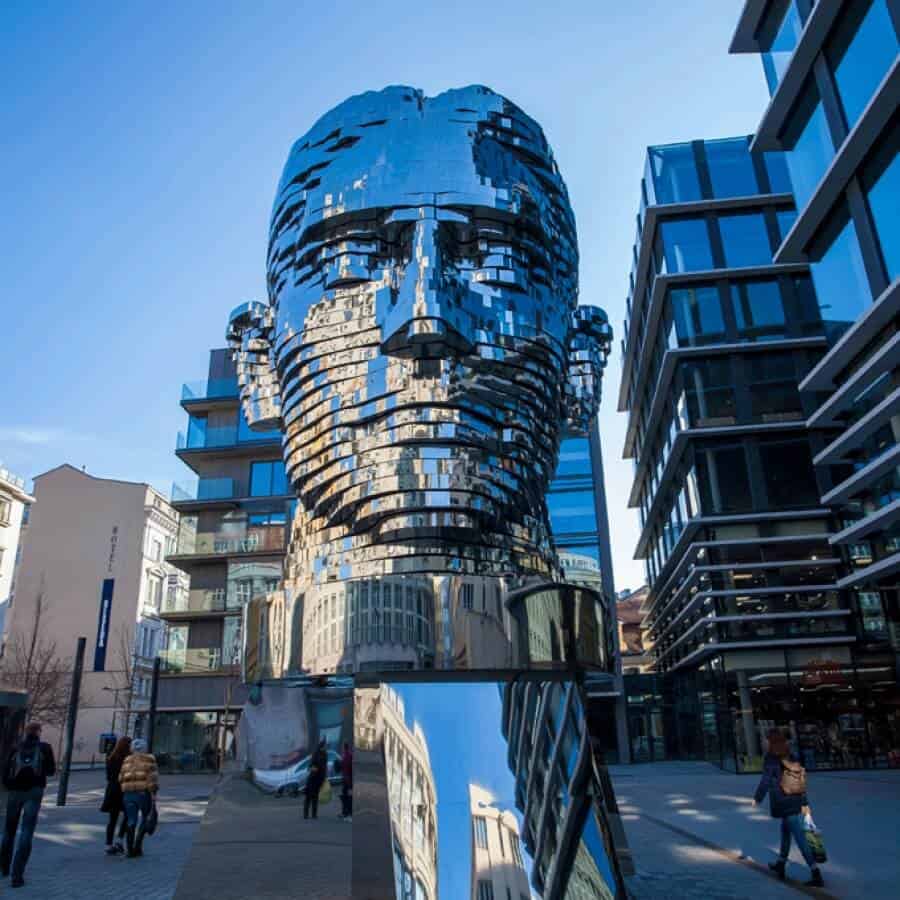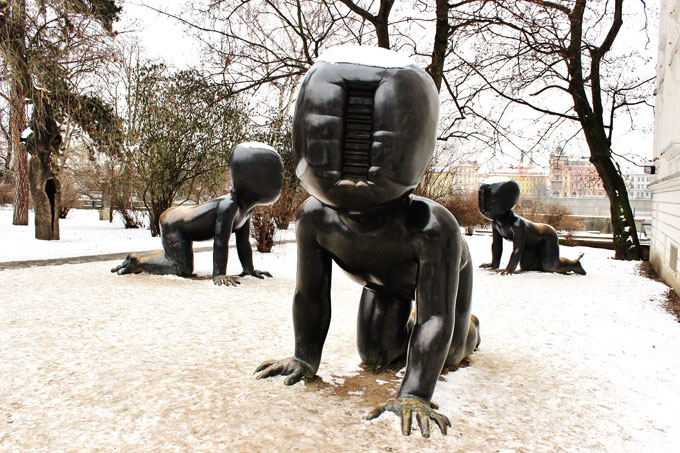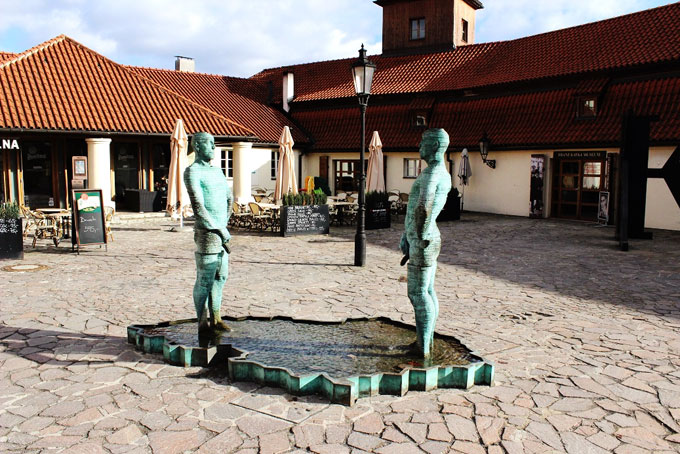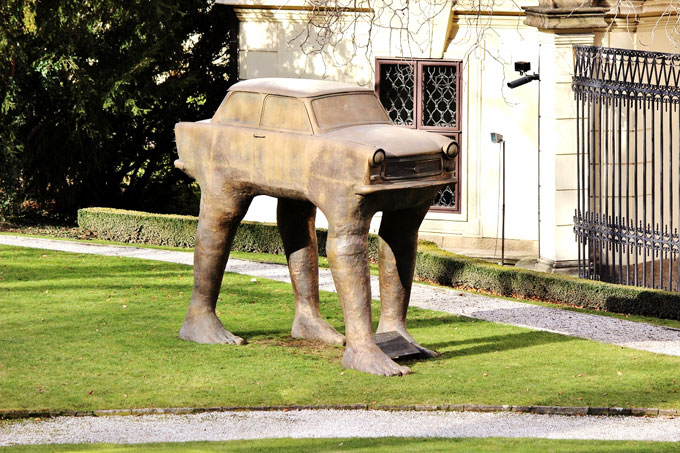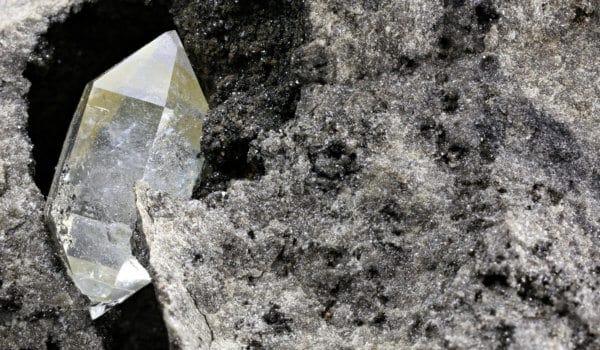David Černý may not be a household name, but his innovative and at times controversial creations undeniably draw attention to the onlooker’s eye. Love him or hate him, Černý’s work certainly cannot be accused of being dull or unwitty. Many of his intriguing sculptures lay nestled within the historic nooks and crannies of Prague’s charming cobble-stoned streets, often eluding the less observant passersby.
Černý gained his notorious reputation in 1991, after being arrested on charges of civil disobedience when in an act to demonstrate indignation towards the Soviet invasion of Prague in 1968; he painted the Soviet tank national monument bright pink. Though Černý never publicly comments on his work, many of his installations have continued to be interpreted as personal manifestations, showcasing his perspective on politics and contentious global affairs.
Perhaps Černý’s most controversial piece came in the form of his sculpture named “Entropa”. Early in 2009, the European Union’s presidential leadership was transferred to the Czech Republic and the nation was also tasked with submitting a customary artistic contribution to the Justus Lipsius building in Brussels. Černý was entrusted and commissioned to lead a group of artists (one from each EU member state) to collaborate in designing a sculpture that symbolized the strength and unity within the EU. Instead, he and a few friends proceeded to create a 3D map of the EU nations, which stereotypically depicted each member state with examples such as a field of ejaculating footballers representing Italy, and Bulgaria being portrayed as a mosaic of squat toilets!
Name: Horse , Location: Lucerna Pasáž – Between Vodičkova and Štěpánská
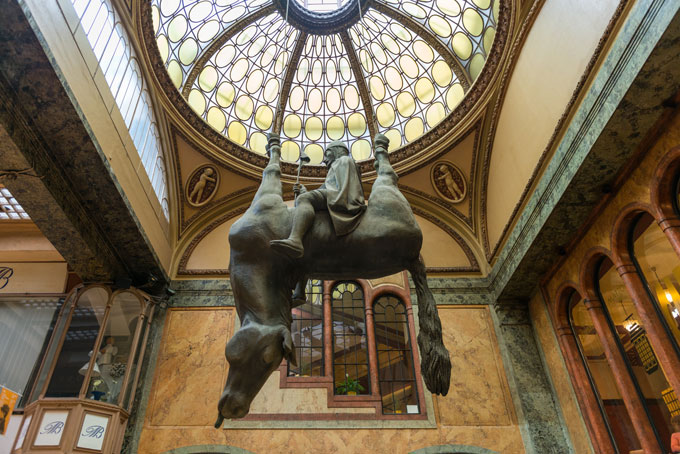
Image Shutterstock
“Horse” is the name given to Černý’s parody of the St. Wenceslas statue that can be found a few hundred metres away, overlooking Václavské Náměstí. Located in the beautiful, art-nouveau style Lucerna Pasáž, “Horse” depicts the Czech Republic’s patron saint St. Wenceslas astride an upside-down, dead horse. Hanging from a domed ceiling and dominating the attention of passersby, the twisted sculpture is thought to be Černý’s way of lampooning the establishment and questioning modern-day Czech national heritage.
Name: Babies, Location: Žižkov Television Tower/Kampa Park
Photo by Leigh Woods
Černý’s “Babies” are visible from almost any location in Prague. Attached to the Czech Republic’s tallest building, the fibreglass sculptures portray crawling mutant-like babies, with a coin slot replacing all facial features. Originally installed for a temporary period in the year 2000, the babies were designed to embellish the futuristic and notoriously ugly Žižkov TV tower. The sculptures were returned as a permanent installation in 2001 after receiving considerable praise from the Czech public. For a closer observation, three of the giant babies are located in Kampa Park, close to the Kampa Museum.
Name: Piss, Location: Franz Kafka Museum
Photo by Leigh Woods
One of Černý’s interactive installations, the aptly named “Piss” showcases two naked male bronze statues urinating over a pool shaped in the form of a map of the Czech Republic. Nearby the statue, a notice displays a number to send SMS messages to. Once the SMS has been received, the statues will then proceed to spell out the received message by peeing it into the water!
Name: Brownnosing, Location: FUTURA – Holečkova 49
Entitled “Brownnosing” Černý’s two giant statues depict men bent over with ladders leading to large holes in their backsides. Climb the ladders and look through the holes to watch a video which portrays former Czech President Vaclav Klaus and Milan Knížák (head of the National Gallery) spoon-feeding each other to the tune of the Queen hit song “We are the Champions”. The message behind the installation has been interpreted in many different ways.
Name: Quo Vadis, Location: Vlašská – German embassy
Photo by Leigh Woods
“Quo Vadis” (Latin for “Where are you going?”) is situated on Vlašská Street which divides Petřín Hill from Prague’s beautiful Malá Strana Area. After a short walk up from Šporkova bus stop, you‘ll reach the German embassy where peeking through the back fence will allow you to gaze upon a sculpted golden Trabant car, with four human legs replacing the wheels. Throughout much of the late 20th century, the Trabant was the most popular car in East Germany and is featured in the monument to commemorate the event in 1989, when 4000 East Germans were granted political asylum from the communist regime, after occupying the then West German embassy’s gardens. Many of the asylum seekers then headed to West Germany, leaving their Trabants behind.
Name: Hanging Out, Location: Na Perštýne 7, Staré Mesto – U Medvídků beer hall
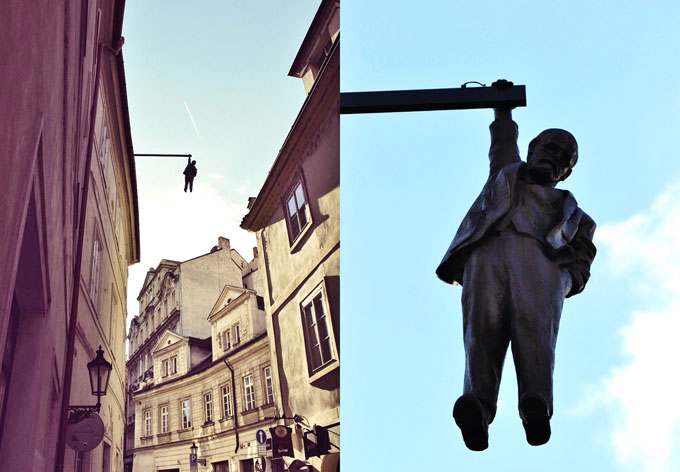
Photo by Leigh Woods
Nestled deep within the passages of Prague’s old town area, “Hanging Out” is one of Černý’s eerier pieces that often go unnoticed to the unsuspecting tourist. Dangling one-handed from a pole attached to a rooftop, a life-sized statue of psychoanalyst Sigmund Freud overlooks wandering passersby. Created in 1996, the installation was perhaps designed to address the question of what role intellectuals will play in the new millennium.
Name: Embryo, Location: Divadlo Na zábradlí
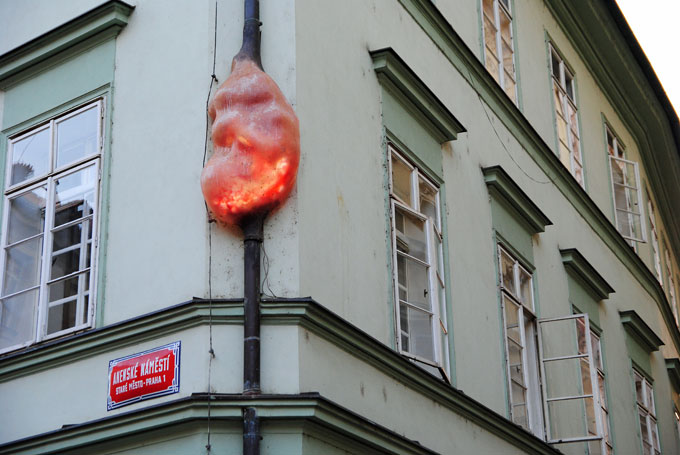
Image Shutterstock
“Embryo” was installed at the theatre Na zábradlí in celebration of its 50 year anniversary. As the name of the piece suggests, it features a human foetus that appears to be stuck in a drainpipe. The sculpture is best viewed at night when LED lights built within the sculpture cause the embryo to become illuminated in the dark.
Name: Franz Kafka Monument, Location: Spálená 22
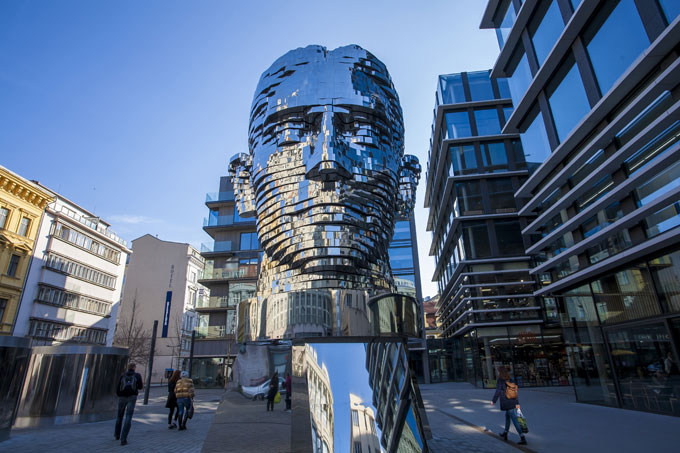
Image Shutterstock
Standing closeby the Quadrio business centre, situated directly above Národní třída metro station is Černý’s enormous mirrored bust of Franz Kafka. The installation is comprised of 42 layers of rotating stainless steel which wonderfully depict Kafka’s tortured personality. The enormous 45 tonne sculpture complements another of the artist’s statues entitled “Metalmorphosis” which is located in Charlotte, North Carolina, USA.
Name: In Utero, Location: Dlouhá 12
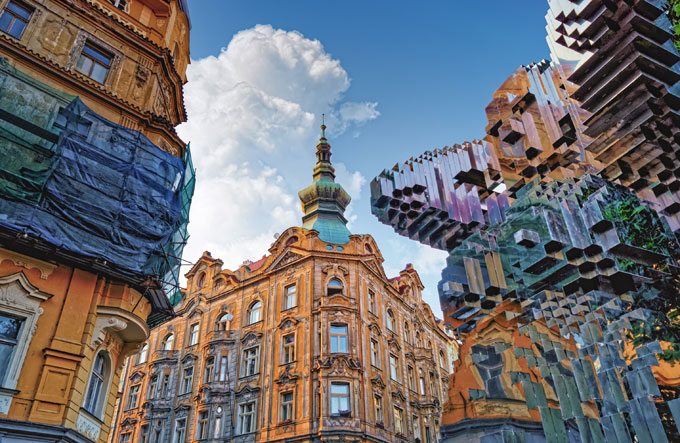
Image Shutterstock
Situated on a small traffic island just a short walk from Prague’s picturesque Old Town Square is Černý’s “In Utero” installation. The futuristic sculpture features a six-meter tall, stainless steel nude pregnant woman on her knees with her hands behind her head. Visitors can step inside the artwork to “experience” the womb.
Černý’s Sculpture Map
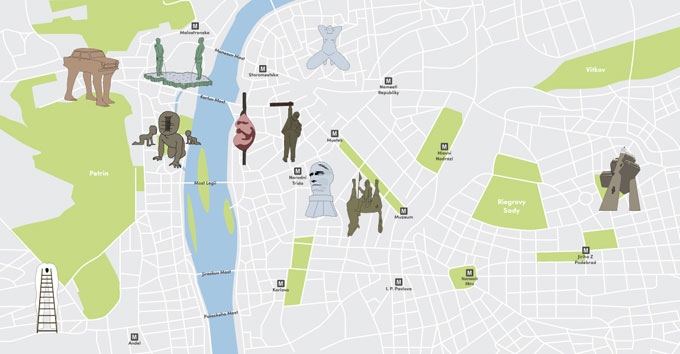
Illustration by Leigh Woods
Support us!
All your donations will be used to pay the magazine’s journalists and to support the ongoing costs of maintaining the site.
Share this post
Interested in co-operating with us?
We are open to co-operation from writers and businesses alike. You can reach us on our email at [email protected]/[email protected] and we will get back to you as quick as we can.
